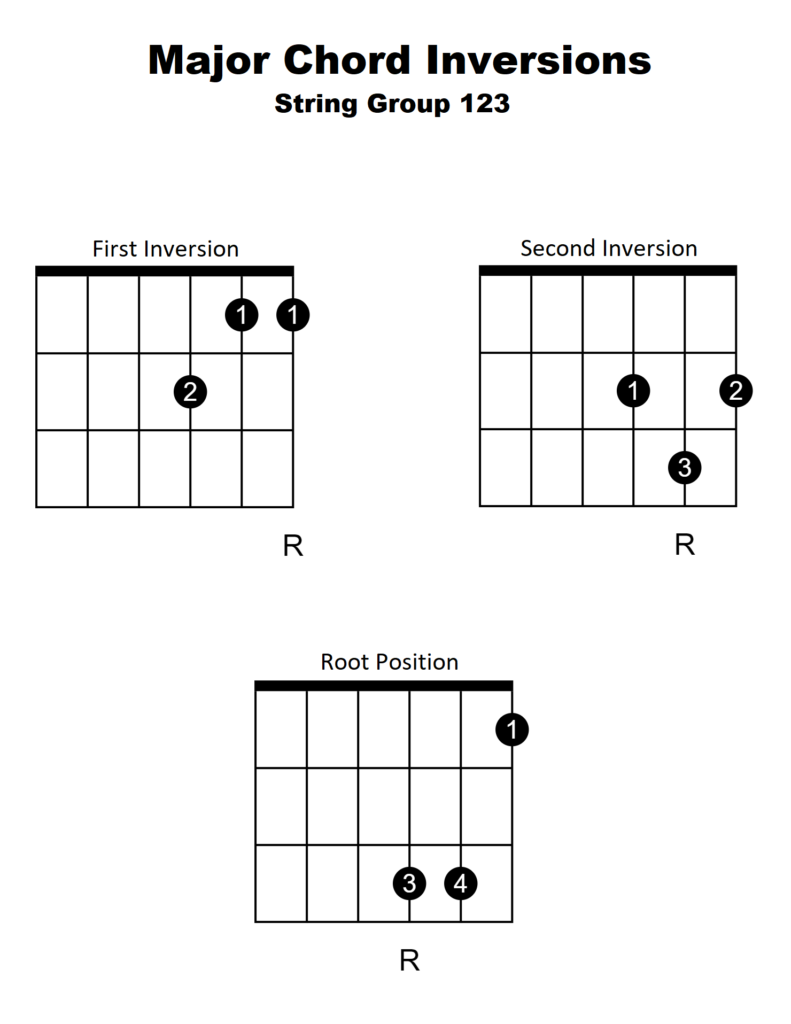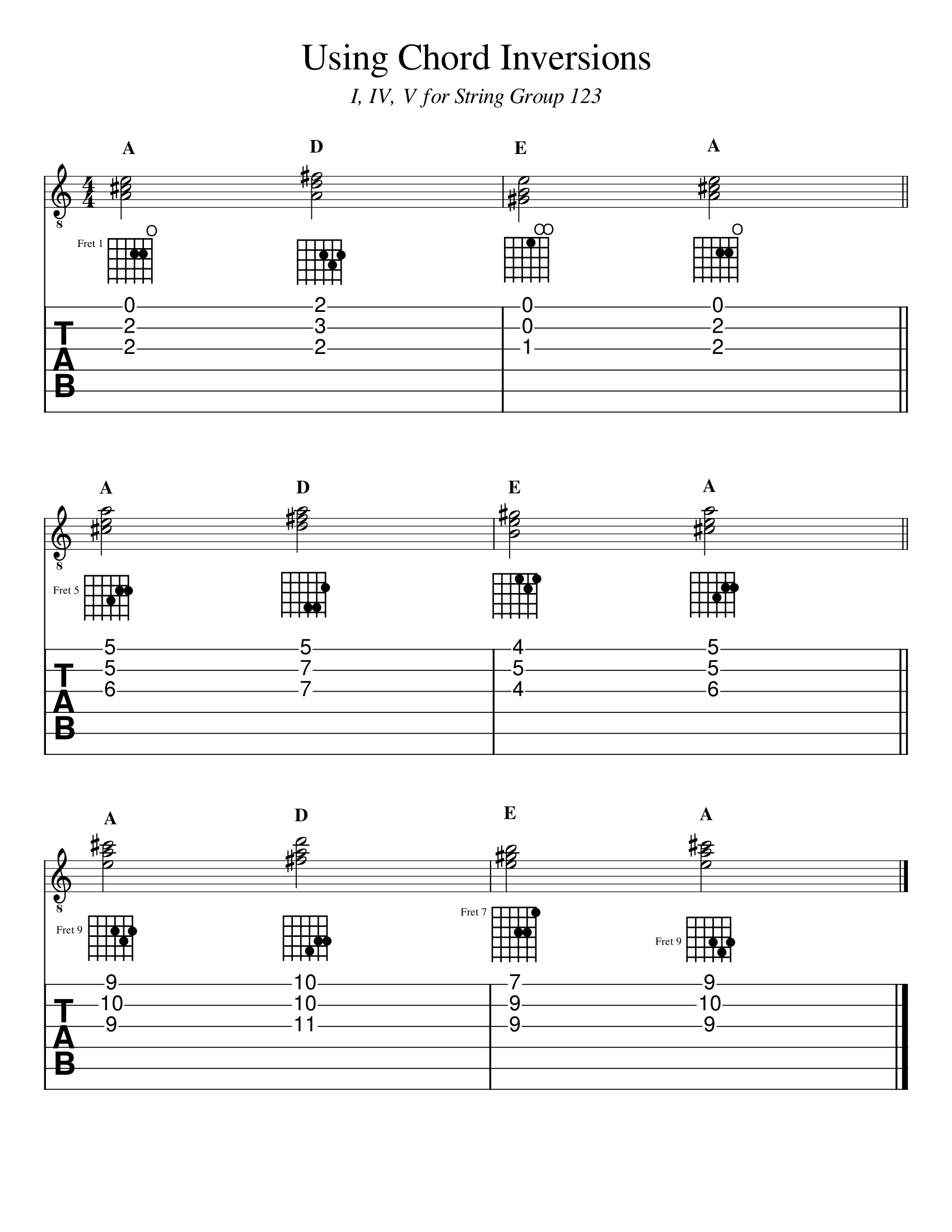We have played many chords over the course of our previous lessons, however we have played very few inverted chords. An inverted chord is when a note other than its root is the lowest note of the chord.
The root of a chord is the tonal center, or “home note” of the chord. For example, in a C chord, the root is C. In a D chord, the root is D.
Below you will find a set of three-note chord inversions for string group 123. Notice how they resemble chords we have seen in previous lessons, such as F and D.
Be sure to exclude any strings that do not show any fretted notes played. Unlike many chords we have learned previously, these chord shapes do not involve any open strings.
[br]

The R represents the root of the chord, as this is the note you will be aligning with to produce a chord of your choice. For example, the first inversion played at the first fret produces an inverted F chord. Move this chord shape up two frets and you are playing an inverted G chord.
Click here for a full reference guide to where the notes are located on the guitar neck.
[br]
Below you will find a set of exercises demonstrating how common chord progressions using these chord inversions can easily ‘connect’ from one chord to the next.

[br][br]
